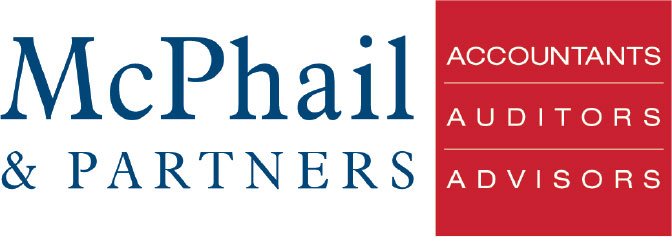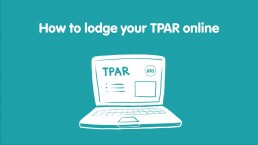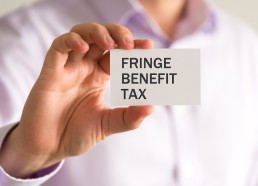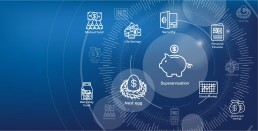COVID-19 Lockdown Support: NSW, Vic and SA
If your business or employment income has been affected by recent COVID-19 related lockdowns in New South Wales, Victoria and South Australia, financial help is available from both the state and Federal governments. Depending on the length of the lockdown, businesses may be eligible to receive a co-funded small and medium business support payment, as well as various cash grants.
It is important to note that not all businesses will qualify for these grants with some schemes only targeting specific industries. Each program has its own rules and qualification is often determined by your ANZSIC (Australian and New Zealand Standard Industrial Classification) Code. This code is linked to your business ABN which can be managed via the Australian Business Register.
We recommend you review your ABN records prior to applying for any of these support packages to ensure your details are up to date and to minimise any delays in processing your application.
Federal support
For small and medium businesses, depending on the length of the lockdown, the Federal government will fund up to 50% small and medium business support payments to be administered by the states.
Non-employing businesses (eg sole traders) will also be eligible.
The Federal government will also seek to make various state business grants tax exempt and provide support for taxpayers through the ATO with reduced payment plans, waiving interest charges on late payments and varying instalments on request.
For individuals, the COVID-19 Disaster Payment will be available in any state or territory where a lockdown has been imposed under a state public health order.
New South Wales
Eligible businesses will be able to claim state government grants under the business grants program. Smaller and micro businesses that experience a specified decline will be eligible for a payment per fortnight of restrictions.
Payroll tax waivers will be available for certain businesses, as well as payroll tax deferrals and interest free payment plans.
Commercial, retail and residential landlords who provide rental relief to financially distressed tenants will be able to claim land tax relief. Residential landlords that are not liable for land tax may be able to claim a capped grant where they reduce rent for tenants.
The NSW government will also be protecting tenants with a short-term eviction moratorium for rental arrears
where a residential tenant suffers a loss of income due to COVID-19 and meets a range of other criteria. There will also be no recovery of security bonds, lockouts or evictions of impacted retail/commercial tenants prior to mediation.
Victoria
Businesses in Victoria will be provided with cash grants from the state government. These payments will be automatically made to eligible businesses and sole traders to minimise delays. The state government estimates that up to 90,000 business that previously received assistance payments in relation to previous lockdowns will receive the new cash grants.
South Australia
Small and medium-sized businesses that suffer a significant loss of income or were forced to close as a result of South Australia’s seven-day lockdown are being offered an emergency cash grant as part of a $100 million business support package. The package also includes a new cash grant for eligible small businesses that don’t employ staff.
In addition, the SA government will provide fully-funded income support payments for eligible workers in regional SA who live or work outside of the Commonwealth-declared “hotspot” local government areas, and are therefore not entitled to the Federal COVID-19 Disaster Payment.
Employers Beware: Increase in Super Guarantee
From 1 July 2021, the rate of super guarantee increased from 9.5% to 10%. Businesses using manual payroll processes should be careful that this change doesn’t lead to unintended underpayment of super, which may attract penalties.
The new rate of 10% is the minimum percentage now required by law, but employers may pay super at a higher rate under an award or agreement.
Most payroll and accounting systems will have incorporated the increase in their super rate, but it’s always good to check. If your business is still using a manual process to pay your employees, you’ll need to work out how much super to pay under the new rate.
Tip: The rate you should use to calculate your employee’s super contributions depends on the date that you are paying your employees – it doesn’t matter if the work was performed in a different quarter. The new rate applies to all super payments made after 1 July 2021.
This latest increase to 10% is by no means the last time the super guarantee rate will change over the next few years. From 1 July 2022 to 30 June 2023 (ie next financial year) the rate will increase to 10.5%, followed by another 0.5% point increase to 11% in the 2023–2024 financial year. So, employers will need to be on their toes to make sure the right amount of super guarantee is paid for the next few years.
If your business is still processing your payroll manually, we strongly encourage you to get in touch with us to discuss your options. There are a number of low-cost electronic payroll solutions available (such as Xero Payroll) which can automate your payroll function and help you keep with to date with your employer obligations.
Workplace Giving versus Salary Sacrifice Donations
Have you made donations either through workplace giving or salary sacrifice arrangements with your employer? If so, and you want to claim a deduction in your tax return, it’s important to know that the tax treatment differs depending on which method you used to make the donation.
Essentially, workplace giving is a streamlined way for employees to regularly donate to charities and deductible gift recipients (DGRs). Usually a fixed portion of your salary is deducted from your pay each pay cycle and your employer forwards the donation on to the DGR. However, the amount of your gross salary remains the same and, depending on your employer’s payroll systems, the amount of tax you pay each pay period may or may not be reduced to take into account the donation.
On the other hand, under a typical salary sacrificing donation arrangement, you agree to have a portion of your salary donated to a DGR in return for your employer providing you with benefits of a similar value. Your gross salary is reduced by the salary sacrificed amount and the amount of tax you pay each pay period will be reduced. Your employer makes the donation to the DGR.
If you’ve made a donation under workplace giving, you can claim a deduction in your tax return. This is regardless of whether or not your employer reduced the amount of tax you paid each pay cycle to account for the amount of the donation. Your employer will give you a letter or email stating the total amount donated to DGRs, and the financial year in which the donations were made. Alternatively, your employer will provide the total amount of donations you made for the year in your tax time payment summary, under the “Workplace giving” section.
If you’ve made a donation to a DGR under a salary sacrifice arrangement, however, you’re not entitled to claim a deduction in your tax return, since it’s your employer that is making the donation to the DGR – not you.
If you make donations outside the workplace, remember that for a donation to be deductible it must be made to a DGR and truly be a gift or donation of $2 or more. You can still claim a deduction if you receive a token item in recognition of your donation (eg a lapel pin, wristband or sticker).
Having the appropriate receipts for any donations you make is essential as these will be required to substantiate your claim and should confirm if the recipient is a registered DGR.
If you are unsure about the tax deductibility of your donation please contact one of our team to discuss.
Tip: It's important to note that many crowdfunding campaigns and sites are not run by DGRs, so any donations made to those causes should be carefully examined before claiming them – it’s likely they won’t be deductible.
Hardship Priority Processing of Tax Returns
If your business is experiencing financial difficulties due to the latest lockdowns, the ATO may be able to help by processing your tax return faster and expediting the release of any refund to you.
We would encourage you to discuss this with our team during the preparation of your tax return if this is a concern for you and we can guide you through your options.
To be eligible for priority processing, you’ll need to apply to the ATO and provide supporting documents (within four weeks of your submission) outlining your circumstances. “Financial difficulty” may include many situations such as disconnection of an essential service, pending legal action or repossession of a business vehicle.
Tip: Priority processing of a business tax return doesn’t guarantee a refund. If your business has outstanding tax or other debts with Australian government agencies, the credit from a return may be used to pay down those debts.
You can apply for ATO priority processing over the phone or through your tax professional after the lodgment of the tax return in question. Once the initial request for priority processing is received, you’ll be notified and contacted if more information is required. Processing will take more time for businesses that have lodged several years’ worth of income tax returns of amendments at the same time, and those that have unresolved tax debts.
Before lodging any priority processing request, check the progress of your return through online services, over the phone or by contacting us as your tax professional. If the return is in the final stages of processing, you may not need to lodge a priority processing request – the return will be finalised before the ATO has an opportunity to consider the request.
ATO Tax Time Support: COVID-19 and Natural Disasters
The ATO has a range of year-end tax time options to support taxpayers who have been affected by the COVID-19 pandemic and recent natural disasters.
Income statements can be accessed in ATO online services through myGov accounts from 14 July and we can also access this information on your behalf directly from the ATO via our Online Services for Agents system.
The ATO also reminds those who may have lost, damaged or destroyed tax records due to natural disasters that some records can be accessed through their myGov account or their registered tax agent. For lost receipts, the ATO can accept “reasonable claims without evidence, so long as it’s not reasonably possible to access the original documents”. A justification may be required on how a claim is calculated.
Tip: Even if you can’t pay, it’s still important to lodge on time. We can help you understand your tax position and find the best support for you.
JobKeeper
Payments received as an employee will be automatically included in the employee’s income statement as either salary and wages or as an allowance. However, sole traders who received JobKeeper payment on behalf of their business will need to include the payment as assessable income for the business.
JobSeeker
Payments received will be automatically included in the tax return at the Government Payments and Allowances question from 14 July.
Stand down payments
Employees receiving one-off or regular payments from their employer after being temporarily stood down due to COVID-19 should expect to see those payments automatically included in their income statement as part of their tax return.
COVID-19 Disaster Payment
The Australian Government (through Services Australia) COVID-19 Disaster Payment for people affected by restrictions is taxable. Taxpayers are advised to ensure they include this income when lodging their returns.
Other assistance
The tax treatment of assistance payments can vary; the ATO website outlines how a range of disaster payments impact tax returns and includes guidance on COVID-19 payments, including the taxable pandemic leave disaster payment.
Early access to superannuation
Early access to superannuation under the special arrangements due to COVID-19 is tax free and does not need to be declared in tax returns.
If you are unsure about the tax implications of any Government support you have received we encourage you to speak to one of our team members who can clarify this for you.
Life Insurance in Super: Costs on The Way Up?
Having insurance through superannuation can be a tax-effective and cost-effective way of protecting yourself and your loved ones. Most funds offer three different types of insurance through super, each covering different contingencies: life insurance, total and permanent disability (TPD) insurance and income protection insurance.
Life cover pays a lump sum or income stream to your beneficiaries when you die, or if you are diagnosed with a terminal illness. TPD insurance pays a benefit if you become permanently or seriously disabled and are unlikely to work again. Income protection insurance pays you a regular income for a specified period if you can’t work due to temporary disability or illness.
TIP: Depending on your situation, you may choose to hold insurance of one type or multiple types through your super, with the premiums automatically deducted from your super balance.
It’s estimated that around 70% of Australians who have life insurance hold it through their super fund. However, the Australian Prudential Regulation Authority (APRA) has noted new and concerning developments that may see the costs of this insurance go up.
According to the data APRA has collected on life insurance claims and dispute statistics, premiums per insured member within super funds escalated during 2019 and 2020. APRA has likened this trend to what occurred between 2012 and 2016 when, after a period of significant premium reductions, insurers experienced significant losses. This led to large premium increases and more restrictive cover terms for insurance holders.
APRA notes that should this trend continue, super members are likely to be adversely affected by further substantial increases in insurance premiums and/or reductions in the value and quality of life insurance in superannuation. The regulator goes as far as saying that the ongoing viability and availability of life insurance through super may be at risk, which will impact a large proportion of the population.
It’s not time to panic just yet, but it’s important to regularly review what insurance you actually need, what cover you have through your super, and what you’re paying for it, as premiums can add up and erode your super – especially if you’re unnecessarily paying them to multiple funds!
TIP: Many funds allow you to adjust your insurance cover (either up or down) to suit changes in your situation, with corresponding premiums. And if you’re not happy with the prices or levels of cover from your fund, you can always look into insurance offerings available separately from your super.
For now, APRA is continuing to monitor the situation to ensure that registrable superannuation entity (RSE) licensees take appropriate steps to safeguard pricing, value and benefits for members that adequately reflect the underlying risks and expected experience.
COVID-19 Stimulus And Support Measures Winding Back
A number of important COVID-19 related government stimulus and support measures are now coming to an end, and some others have begun phasing out, which will occur over a slightly longer period.
This means that businesses and individuals need to prepare for an environment where the government safety net is not as wide.
TIP: If you or your business need information on managing your financial arrangements as you face the winding down of these government supports, we’re here to help – contact us today.
The following are, at the time of writing, among the measures that will cease at the end of March 2021:
- JobKeeper (ends 28 March);
- Coronavirus Supplement (ends 31 March);
- the temporary COVID-19 qualification rules for JobSeeker payment and youth allowance (end 31 March);
- HomeBuilder (ends 31 March); and
- some apprenticeship wage subsidies (end 31 March).
ATO Reminder: Lodge Your TPAR
The ATO is reminding owners of businesses that provide various services to lodge their taxable payments annual report (TPAR) for the 2019–2020 income year. It estimates that around 280,000 businesses were required to lodge a TPAR for the 2019–2020 financial year, but at the beginning of March around 60,000 businesses still had not complied with the lodgment requirements. The reports were originally due on 28 August 2020. To avoid possible penalties, these businesses are encouraged to lodge as soon as possible.
The ATO notes that many businesses that have engaged delivery services (including food delivery services) though a contractor/subcontractor may not know they have to lodge a report.
TIP: Your business doesn’t need to provide the relevant services exclusively to be captured under the TPAR system – if you only provide the service for a part of the year, or even if it is only a small part of your business, you may be required to lodge a TPAR.
The TPAR was introduced to combat the “black economy” which is estimated to cost the Australian community around $50 billion, or 3% of gross domestic product (GDP). It is designed to help the ATO identify contractors or subcontractors who either don’t report or under-report their income (eg through hiding amounts received as “cash in hand”).
The report is required for businesses that make payments to contractors/subcontractors and provide any of the following services:
- building and construction;
- cleaning services;
- courier services, including delivery of items or goods (letters, packages, food, etc) by vehicle or bicycle, or on foot;
- road freight services;
- IT services, either on site or remotely; and
- security, investigation or surveillance services.
For example, during the past year many eateries, grocery stores, pharmacies and other general retailers pivoted to providing home delivery for their customers. As such, they may have needed to engage contractors or subcontactors to provide courier services. If the total income received for these deliveries or courier services amount to 10% or more of their total business income, they will be required to lodge a TPAR even though they may not have needed to do so previously.
If your business is required to lodge a TPAR, the details you’ll need to report about each contractor should be easy to find and are generally contained on the invoice you receive from them. This includes details such as their ABN, name and address, and the gross amount paid for the financial year (including GST).
TIP: Think your business may needed to lodge a TPAR ASAP? If you’re not sure or just need some help with lodging the report, we have the expertise to help you.
It’s Time to Consider FBT
If your business has provided any benefits to your employees, you may be liable for fringe benefits tax (FBT). This includes benefits to current, prospective and former employees,as well as their associates. It’s important to keep in mind that this applies no matter what structure your business has – sole trader, partnership, trustee, corporation, unincorporated association, etc. If a benefit was provided in respect of employment, then it may be a taxable fringe benefit.
Although the Australian income tax year runs from 1 July to 30 June, the FBT year is different, running from 1 April to 31 March the following year – so now is the time to consider your business’s FBT obligations and organise your records for the year 1 April 2020 to 31 March 2021.
TIP: Business FBT returns and payments are generally due by 21 May if you lodge yourself, or by 25 June if we lodge electronically as your registered tax agent.
In total, there are 13 different types of taxable fringe benefits, each with their own specific valuation rules. The FBT tax rate of 47% may seem fearsome, but there are ways to reduce the amount of FBT your business may have to pay where a benefit has been provided.
One of the simplest ways to reduce the amount of your business’s FBT liability is for your employees to make payments towards the cost of providing the fringe benefit. This is known as employee contribution, and certain conditions still apply.
Your business can also take advantage of various exemptions and concessions to reduce FBT liability, but you’ll need to keep specific and careful records, including employee declarations and invoices and receipts. As a general rule, you should keep these documents for at least five years after the relevant FBT return is lodged.
Your Future, Your Super Legislative Changes
The Treasury Laws Amendment (Your Future, Your Super) Bill 2021 has been introduced to Parliament to implement some of the “Your Future, Your Super” measures announced in the 2020–2021 Federal Budget. Treasurer Josh Frydenberg has said the measures are intended to save $17.9 billion over 10 years by holding underperforming super funds to account and strengthening protections around people’s retirement savings. The changes include:
- “stapling” your chosen super fund so it follows you when you change jobs, and you don’t end up paying fees for multiple accounts;
- requiring funds to pass an annual performance test, and report underperformance to fund regulators and members;
- strengthening trustees’ obligations to only act in the best financial interests of fund members; and
- creating an interactive online YourSuper comparison tool which will encourage funds to compete harder for members’ super.










